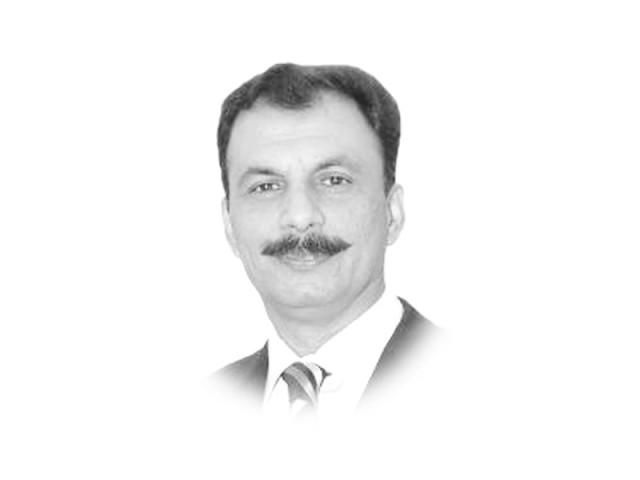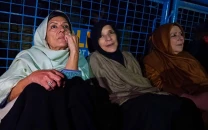Women in the police — bumpy road to equality
Offering women more a respectful status and opportunities in male-dominated profession like police is a gigantic task

The writer is a senior police officer posted to
Khyber-Pakhtunkhwa. He tweets @alibabakhel
Police forces in South Asia, on average, have only a five percent representation of women. According to a 2011 UN Women report, globally women constitute nine per cent of police organisations. Even in Scandinavian countries, women representation in police is not more than 30 per cent.
In 2015, the Commonwealth Human Rights Initiative made an attempt to assess the ground realities regarding women policing in four South Asian countries. Women participation in law enforcement in South Asia represents a bleak scenario. The police force in Bangladesh has women representation of 4.63 per cent, in India it is 6.11 per cent, in Maldives it is 7.4 per cent and in Pakistan it is a dismal 0.94 per cent. In this region, the policing function still operates on colonial lines and is used as an instrument of force. Hence, it is yet to transform into a public service. Policing in South Asia is reactive-cum-complainant-centric where victims’ rights are often compromised. If it is transformed into a ‘service’, it will offer more space to women to perform.

While the Constitutions of India, Pakistan, Maldives and Bangladesh prohibit discrimination and guarantee equality, such ideals have not transformed into reality. Increased access to justice for women warrants an increased enrollment of women as police officers, judges, prosecutors and lawyers. In the dispensation of justice, the discriminatory and arrogant behaviour of a male-dominated criminal justice system is a potent barrier. An increased participation of women will not only soften the hard face of the criminal justice system, it will also improve human rights standards.
However, a mere numerical increase of women may not improve the situation. What is also required is their empowerment, clearly defined roles and capacity-building. In South Asia, recruitment campaigns for women in police do not get the same response as recruitment schemes for men. To attract more women to a career in the police requires a revision of recruitment, training and placement standards.
In Bangladesh, out of a total strength of 154,208 police personnel, 6,853 are women. There is a 10 per cent quota reserved for women in the country’s police force, however, mere quotas or changes in legal frameworks and commitments to international legal instruments will not serve the purpose. More political ownership and change of attitude within the criminal justice system and the public will bring real change. Advocacy through the media can also be instrumental in mobilisation of public opinion and attracting more dedicated females to the police.
In Pakistan, Article 8 (2j) of the Police Order requires the establishment of Crime Against Women units. According to the National Police Bureau, out of a total strength of 425,978, only 4,020 are women. The FIA has a 9.68 per cent representation of women, the Motorway police has 3.14 per cent, Gilgit-Baltistan has 3.01 per cent, Punjab 1.2 per cent, Khyber-Pakhtunkhwa (K-P) 0.72 per cent, Sindh 0.61 per cent, Balochistan 0.31 per cent, Islamabad 1.55 per cent, the Railway police 1.71 per cent and Azad Kashmir has a 0.93 per cent representation of women as part of law enforcement.
The Pakistani women policing model is knitted on the notion of isolation. This has basically meant that exclusively female police stations have failed to attain the desired objectives. By introducing women desks recently, the K-P police has tried to bring women policing out of the isolation syndrome. While this is a positive step to bring more inclusivity, its sustainability is yet to be proved.
Hurdles faced during recruitment, training, promotions and placement on managerial positions require special attention. Owing to the ongoing onslaught of militancy, policing has become a hazardous profession, therefore, initially women should be enrolled in specific areas of policing like investigation, public dealing, traffic, training, telecommunications, information technology and complaint cells. While there are quotas reserved for women, there is hardly any effort to assess their effectiveness. To make recruitment a success, it is imperative that women officers are made part of the selection team and process.
In one of its reports, the Indian National Police Commission recommended a greater role of women in investigation of offences related to violence against women and children. According to the Bureau of Police Research and Development, in 2014, the total strength of the Indian police was 1,722,786, including 105,325 female police officers. To improve female enrollment in police, the Indian government has issued advisories to states to target a 33 per cent representation of women in the police. The government has advised that every police station should have three female sub-inspectors and 10 female constables.
Maldives, a country made up of 1,192 islands, is policed by 3,683 police officials, including 275 female personnel. A majority of women police officials are deployed on desk jobs although there is a growing demand for deployment of more female officers on operational assignments. Further, there is a move to appoint more females in management positions.
Every police organisation should draft and publicise its recruitment policy vis-a-vis women that should clearly state the number of slots to be filled with the required standards and process. This should be widely disseminated through mass and social media. Prior to the recruitment process, career counselling sessions at educational institutions can attract dedicated talent. Transformation of a historically male-dominated profession into one that offers a more respectful status and opportunities to women is a gigantic task, which cannot be accomplished without political ownership and a change in public perception. In South Asia, cooperation between states in the field of law enforcement is a missing link. Hence, for improvement of women policing standards, the platform of Saarc should be used as a springboard.
Published in The Express Tribune, January 8th, 2016.
Like Opinion & Editorial on Facebook, follow @ETOpEd on Twitter to receive all updates on all our daily pieces.













COMMENTS
Comments are moderated and generally will be posted if they are on-topic and not abusive.
For more information, please see our Comments FAQ